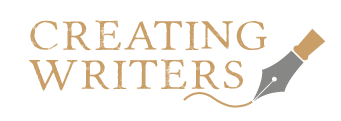Charlie Laidlaw is an author and tutor at Creating Writers
To succeed as a writer your book must have a structure that works, and it must be told in a way that is engaging for the reader.
A simple structure might be: you set the scene, and stuff happens that complicates everything. Then the story builds towards crisis and climax. Then back down after crisis resolution to denouement.
Many new authors start writing with little idea how the book will hang together, what its structure will be, or how it will end.
A better way is to plan in advance, from first page to last. While it’s true that finished novels never quite work to plan, it gives you a template from which to start.
For example, I start by writing the first and last chapters. That gives me a starting point and finishing line.
Map out
That allows me to figure out a structure to the book that gets me to that finishing line.
A good bit of advice is to map your book out. At first, that need only be the overall arc of the story.
Then, develop your map into a chapter by chapter structure. That way you can see how the story will develop, and the plots that go into it.
Think of it like a five-year business plan. The kind of business plan that every business has. While that business plan doesn’t guarantee success, it does focus minds on how to achieve its aims.
The same is true for you as a writer: put down as much structure as you can and only then write in the words.
Some writers work with index cards and write down different ideas for scenes on different cards. Then they shuffle them around until they fit into a chapter-by-chapter structure. Others scribble chapter ideas on large pieces of paper, or endlessly cut and paste on their computers.
You may find that, as you write, your book’s structure has to be change but, importantly, you have a template from which to work. It also helps to fix in your mind why you’re writing it, what you want your book to say, and what elements of plot and story to work on.
Courses
In other words, it will help you to focus on the book’s main points and more clearly see where you might divert into something irrelevant or distracting. Think of your book as a living thing. It needs a heartbeat running through it. A regular pulse of action, character development, and conflict and conflict resolution.
Having a detailed structure gives you something to work to. You can better build in tension and conflict in the right places.
Remember, you have to keep your readers guessing. You need twists and turns along the way, but not all at once.
Every book does, of course, have a different structure. The best way to understand structure is to read widely.
Get to understand changes in pace, how the author has put the book together. Flip backwards and forwards. Books are the very best teachers.
But if you need some help to get started, speak to us.
Creating Writers has two creative writing courses, an introductory course and our flagship Diploma course – with a real qualification at the end of it.
Few people are born writers. It’s a skill most of us have to learn.
For more information, you can contact us here.
Photo by Dan Counsell on Unsplash

